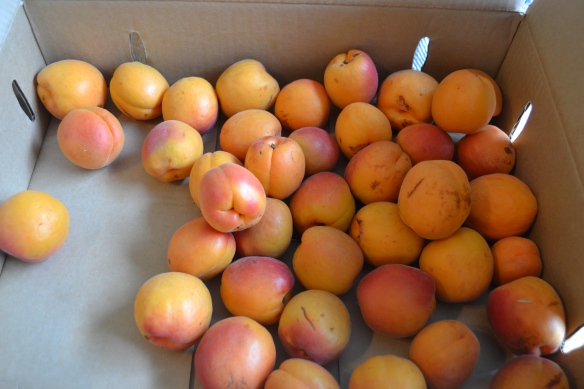I’ve been spending a lot of time of late trying to quantify things, such as which marketing actions translate into actual books sales; which high school curriculum will enable Daughter #1 to have an interesting and challenging education, get into college, graduate and be self-supporting before she’s 40; and how much value our two bathroom renovations will add to our house and to our lives.
(I almost entitled this post Bonfire of the Vanities. You can’t underestimate the value of providing bathroom space for two girls to straighten their hair at the same time). When not searching online for a 42 inch vanity with an offset sink, I’ve been writing articles about the benefits and detriments of standardized tests in our public schools and other education-related conundrums.
All this examination of data, marketing campaign statistics, shower stalls, tile samples, paint chips, vanity tops (we decided to have one custom made) cost-benefit analyses and discussion of measurable outcomes has my mind reeling. I’m overloaded with information yet, when the decision-making rubber meets the road, like Whitney Houston, I find myself wondering “how will I know?”
Luckily, a few shining lights have guided me.
Though it had been an exceptionally busy week and I was on the verge of coming down with the nasty cold/flu that knocked me flat by Sunday, I’m glad I made the effort to attend a meeting of Book Publishers Northwest, where the featured speaker was Laura Pepper Wu, self-described entreprenette and book marketing guru, whose website 30 Day Books offers a wealth of valuable information for independent authors. I haven’t yet purchased her pdf book Fire Up Amazon (at $4.99 it’s a deal), but I plan to.
I followed a few of the tips she offered for optimizing your book’s Amazon page (turns out, it’s all about the algorithms, baby) and lo and behold I had some, dare I say, measurable outcomes.
There were more measurable outcomes to come.
I love my husband, I really do. But we don’t usually follow the same path when it comes to house projects, which is why our kitchen wallpaper was half torn down for a number of years. Up until now, our philosophy has been, to quote Bob Dylan, “most likely you go your way and I’ll go mine.” If one of us is invested in a project, we run with it (shelves and anything to do with the garage – him, turquoise kitchen walls and any other cool painting project – me.
When we have to work together…. well…
But these bathrooms. Maybe it’s the chance of escape from the vicissitudes in mood of our teen and tween that had us companionably scraping wallpaper from the master bathroom for hours one Sunday (because you know the t(w)eens aren’t going to offer to help) and trolling for tiles on a Saturday afternoon.
I know that’s what drove us to the custom vanity place not once, but twice this past weekend and then off to a lighting fixture store after that. Imagine my surprise when we managed to agree, not only on floor and shower tiles, but also on style of vanity, counter top (that was big), faucet style and finish and drawer pulls, but also on unexpected new bedroom lighting. I’ve been worrying about us as empty nesters. Now I see our bright future. We’ll become renovators.
(Anyone who knows me is snorting right about now and perhaps uttering that evocative British phrase “Not bloody likely.”)
The promise of a new vanity that would soon need to be picked up led me to get my act together and finally repair the broken trunk lock of the Famous Minivan. I have yet to deliver the bags that have been sitting in said trunk to Goodwill or to remove Daughter #2’s end of first term project — it’s term four now– but I’m on a roll, so watch out, world.
The nasty cold/ flu bug had knocked me flat just as the high school deliberations started intensifying and, deprived of my usual moxie, I was looking for a sure thing. I found it in a recipe.
If you like to cook with recipes, you know that there are certain people you can rely on to never steer you wrong (Claudia Roden, Marcella Hazen, Paula Wolfert, Patricia Wells, David Lebovitz and, my current gastronomic crush, Yotam Ottolenghi) and other Julia-come-latelys who have to earn your trust.
If you like to cook at all, you know that there are certain ingredients that are magic together and techniques that are nearly impossible to screw up. Like stew. I’m a big fan of stews, tagines and any sort of one pot mash-up.
So when I saw that the ingredient list included chickpeas, preserved lemons, dates, saffron, plus lamb and that nice exotic lamb sausage, merguez, I put down my tissue box and perked up. I hadn’t felt like eating much over the past few days (but had managed to produce chicken adobo and a Mexican tomato soup with fideos. I may not be timely with household projects, but, as my friend Donn likes to say “Damn, the bitch can cook).
It came from The Garum Factory, one of my favorite foodie blogs, which perks up my inbox each Friday morning with its clever combination of history, culture, technique and interesting food.
On the way back from picking up the now-repaired Famous Minivan, I zipped over to store, bought the ingredients, slapped them in the pressure cooker and in less than an hour was tucking into a divine tasting and beautiful looking lamb stew.
Sometimes it’s nice to forget about algorithms.
And sometimes it’s a relief to have a recipe for success.












































